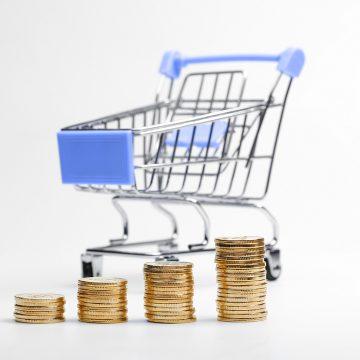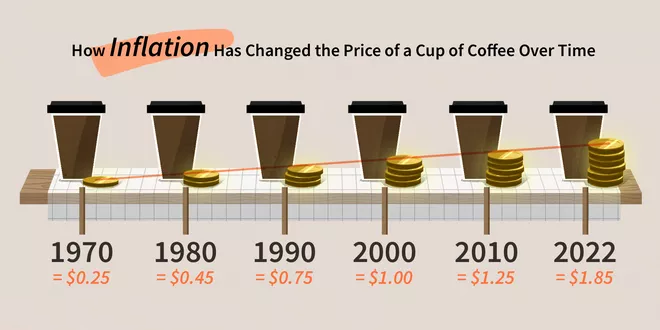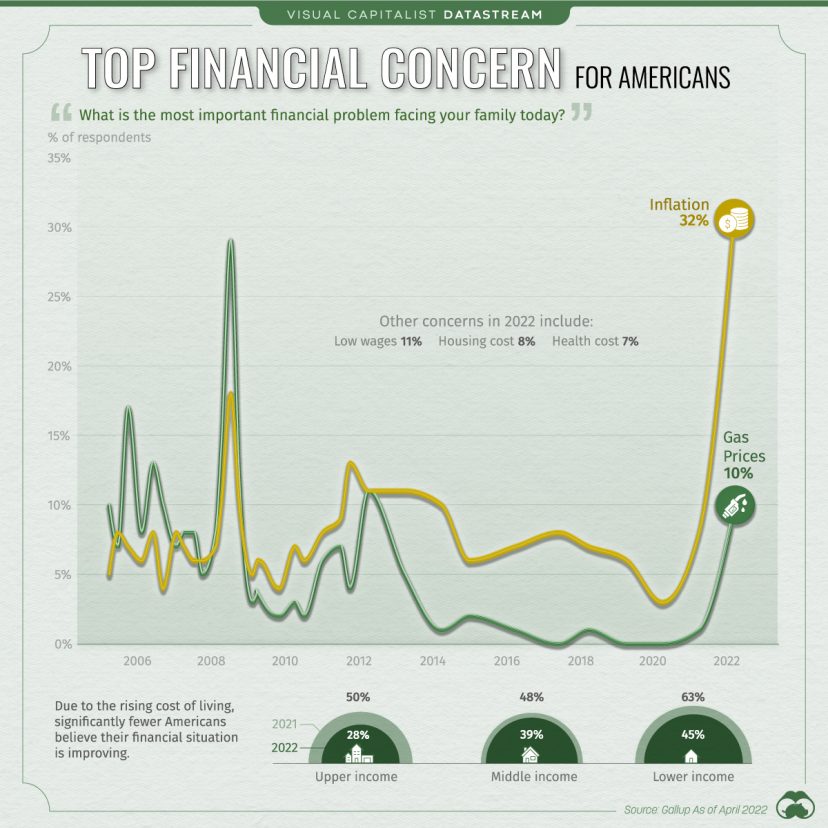
What is inflation? What are the reasons for it? How does it influence the economy, and what methods are there to control it? In this article, we will try to answer these questions. Let us get started.
What is inflation
Inflation is the index of general growth of prices for goods and services. When prices grow, a unit of the national currency can buy fewer goods and services. Hence, inflation facilitates a decrease in the purchasing power of money. The opposite of inflation is deflation, which is a stable decline of the prices for goods and services.
In other words, inflation is the speed (expressed in pecent) of the growth of general price levels for goods and services. Inflation levels demonstrate how high prices have grown in the country over a certain timeframe. Inflation leads to an increase in the prices for various assets over time. The higher reaches inflation, the more prices grow.

Indices for inflation assessment
To assess inflation over a certain timefarem, special indices are used.
- Consumer Price Index (CPI) demonstrates the change of average-weighted prices for goods and services in the basic basket over certain time. This is so-called consumer inflation that includes food, clothes, medical services, etc.
- Producer Price Index (PPI) evaluates the average change in selling prices of domestic producers of goods and servies. It evaluates price changes from the seller’s point of view and includes production of consumer goods, capital equipment, crude materials processing, etc.
- Wholesale Price Index (WPI) is another inflation index that evauates and tracks changes in the prices for goods at the stages before they get to retailers. To calculate it, we use the price for a set of goods that are essential at the first stage of commercial operations.
Reasons for inflation to appear
Inflation can be provoked by a bunch of factors. The most widespread of them are:
- Inflation of demand appears when the demand for certain goods and services exceeds the ability of the economy to satisfy it. When demand exceeds supply, prices experience upward pressure, which generates inflation. The most obvious example is the growth of inflation indices due to the growth of the demand and price for energy carriers.
- Inflation of costs shows itself as the growth of prices provoked by an increase in wages and costs of materials. These costs, as a rule, fall on the consumer in the form of increased prices for goods and services.
- Increase in money supply: the overall quantity of money in turnover grows, including cash, coins, and money on banking accounts. If money supply grows faster than goods are produced, this might provoke inflation. Money supply is normally regulated by the Central Bank of the country.
- Devaluation is the decrease in the exchange rate of the national currency, which brings down its purchasing power. Devaluation of the currency stimulates export, making overseas clients buy more domestic goods, while foreign goods become more expensive.
How inflation influences economy
Inflation can be either a negative or positive phenomenon depending on the speed of its growth and other events in the economy. Excessive inflation is considered bad for the economy, yet no inflation at all is also a negative event. Most economists consider stable inflation of 2% a year optimum.
Here is how inflation influences the economy depending on its speed:
- Moderate inflation is under 10% a year, and thanks to being predictable and controllable it supports sustained growth of the economy and does not lead to abrupt depreciation of the national currency.
- Galloping inflation is between 10% and 100% a year. It has a negative influence over the country’s economy. Producers of goods and services prefer binding prices to some stable and convertible global currency. People try to save their money by investing it in various material goods: cars, household appliances, real estate – thus heating up prices additionally.
- Hyperinflation is especially high, above 100% a year. Quite often such inflation can be a consequence of acute political crises or wars that demand decisive actions from the government. This can totally destroy the turnover of goods and cash and the whole financial system of the country due to the loss of trust in money.

Methods of controlling inflation
The financial regulator of the country bears the responsibility of fighting back inflation. This is done by certain measures of the credit and monetary policy. Here are the main methods by which Central Banks can influence inflation.
- Deterrent credit and monetary policy is nowadays one of the most popular ways of controlling inflation. The goal of such a policy is to decrease money supply in the economy by increasing the interest rate. This helps to cool down the economy, making credits pricier and thus decreasing spendings of consumers and companies. The CB can sell securities in the open market, increse reserving norms for commercial banks, and apply other measures of selective credit control. Increases in the interest rate have a bad influence on the stock market but facilitates growth of the national currency.
- Financial measures. They include increased control of state expenses, private expenses, private and state investments. Tax regulations also belong here: the tax system must provide stimulation to those who save, invest, or produce more.
- Price control. Another efficient measure of conquering inflation is increasing production and controlling prices for goods from the basic basket, such as food, clothes, fuel, etc.
Closing thoughts
Inflation levels show how high prices have grown for certain goods and services over s certain timeframe. To assess inflation, several indices are used (CPI, PPI, WPI). Moderate inflation enhances economic growth, while high inflation have a negative influence on the economy. Control over inflation is carried out by the Central Bank; the main controlling measure is toughening of credit and monetary policy.
The post What Is Inflation: Reasons and Consequences appeared first at R Blog – RoboForex.
